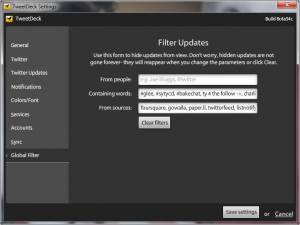We will be picking up the Mobile Marketing conversation this evening with a look at experiences in 2011, priorities for 2012 and how mobile is changing sales enablement.
Here are the questions to start off this evening’s discussion: [Read more…]
B2B Marketing, Digital Media and Marketing Strategy
We will be picking up the Mobile Marketing conversation this evening with a look at experiences in 2011, priorities for 2012 and how mobile is changing sales enablement.
Here are the questions to start off this evening’s discussion: [Read more…]
You find a great blog, read regularly, and tweet or share everything posted. So why not automate sharing what you already share, and get a few minutes back each day?
On the surface, it seems logical. However, if you are using automation, it likely is having side effects.
 In social media, marketers buy attention with promotions or discounts. And research shows consumers expect this from marketers. 44% connect with brands on Twitter for discounts (source). The problem is, buying attention is an old school mindset, plopped into a new communication paradigm.
In social media, marketers buy attention with promotions or discounts. And research shows consumers expect this from marketers. 44% connect with brands on Twitter for discounts (source). The problem is, buying attention is an old school mindset, plopped into a new communication paradigm.
For social media to become an important part of the marketing mix and create loyal customers, it cannot continue to rely on tactics that reinforce consumer price sensitivity. Consistent discounts and promotions erode your pricing power; preference increases your pricing power. [Read more…]
 We each build our own communication channel on Twitter, choosing who to follow and list. However, based on a number of recent conversations I have had on Twitter and Google+, many Twitter users are overlooking a significant tool to customize their channel and reduce noise: filters.
We each build our own communication channel on Twitter, choosing who to follow and list. However, based on a number of recent conversations I have had on Twitter and Google+, many Twitter users are overlooking a significant tool to customize their channel and reduce noise: filters.
If your Twitter stream clogs up every evening with color commentary on a TV show, filters can remove it, without unfollowing people you otherwise appreciate. If auto-post applications are filling your stream with drivel, filters can cut through it.
Filters change the list/follow/unfollow decision, giving you more control over the tweets you see from each person. The difference in the stream of a single person may be minor, but across even 50 people, filters can be the difference between a stream of noise and a source of content and conversation. [Read more…]
 Twitter is not a communication channel, it is a platform that allows each of us to create and evolve our own custom communication channel.
Twitter is not a communication channel, it is a platform that allows each of us to create and evolve our own custom communication channel.
If Twitter is not working for communication, it is not a problem with Twitter. As a platform, Twitter is developing and our behavior reflects its infancy, with the full spectrum of human behavior on display.
The societal norms for Twitter have yet to be established. The fact there are so many posts on Twitter etiquette is proof. A Google blog search for “Twitter Etiquette” returns 32,000 results, to just 11,000 for “Dinner Etiquette”.
If Twitter is no longer an effective channel, like Kary Delaria postulated in Three Reasons Twitter is Beginning to Suck, the problem stems from how people are building and evolving their own communication channels on Twitter. [Read more…]
 What would happen to your marketing programs if every channel required explicit opt-in and opting out or unsubscribing was just a click away?
What would happen to your marketing programs if every channel required explicit opt-in and opting out or unsubscribing was just a click away?
Although it may seem absurd, this question is relevant today for two reasons:
Create a personalized dialogue with each prospect at every point in the sales process!
This sounds like a pitch for marketing automation. While the result is valuable, it is not a dialogue. Here are some of the characteristics of this “dialogue” marketing has created with automation:
Real conversations need to come back into marketing communications. [Read more…]
Audience research is invaluable and well developed personas provide a broad array of insights into the lives and minds of your target audience, insights that form the basis for your social media plans.
Then, you put your social media plan in place, including sharing great content from others and creating your own. And you hit a fundamental disconnect. Your planning is based on your target audience, but you are measuring activity from everyone. Here are two questions that are difficult to answer.
Jay Baer proposed in a blog post on Monday that Facebook for Business is Email Marketing 2.0, and that email can then be used to value marketing efforts on Facebook. It is an excellent approach, and I think most comments missed the point. Facebook marketing and email marketing are both about developing an audience that allows you to engage over time.
The most important part of the heading isn’t Facebook, it is Email 2.0. Both Facebook and email are used by companies to distribute information. But email marketing is a one-way blast channel.
Email Marketing 2.0 should look vastly different from today’s email marketing. With all due respect to the email providers integrating social sharing into email, that does not make email marketing a platform for sharing and discussing. It continues to be a one-way channel, at times simply promoting discussion or sharing elsewhere.
When you consider what social networks can become key marketing channels for your business, there isn’t one right answer. Take a quick look at the very different sharing patterns of the three sites below.
[Read more…]